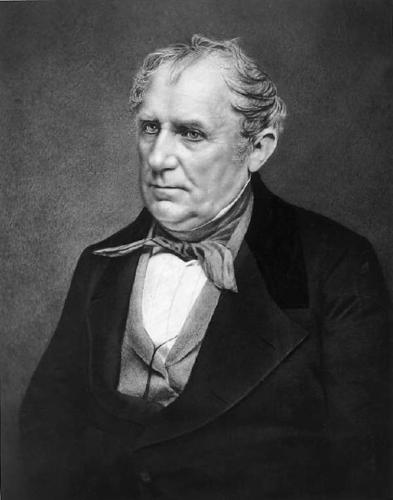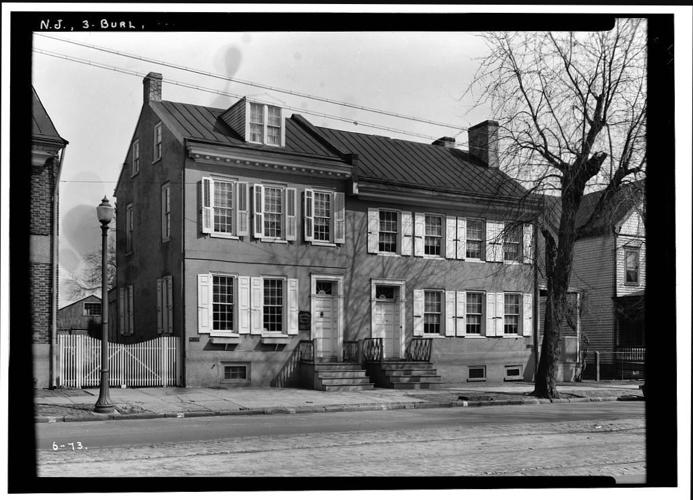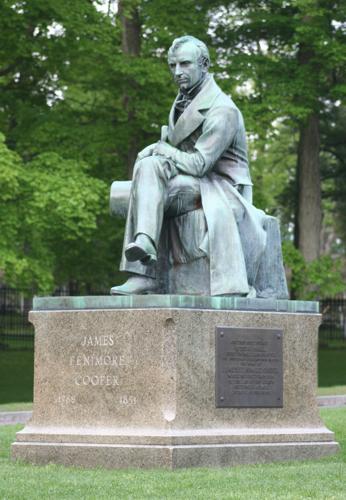Tucson’s Cooper Street is named for the renowned author of the first detailed novels of frontier life in American literature.
James Fenimore Cooper was born in 1789 in Burlington, New Jersey, to William and Elizabeth (Fenimore) Cooper. His father served as a congressman during the George Washington and John Adams administrations and his mother came from a well-respected New Jersey Quaker family.
When James was 1, the family relocated to a primitive settlement in upstate New York near present-day Otsego Lake. The settlement, which would later be called Cooperstown, is where he grew up on the frontier as one of 12 children in the family.
His education came from the rich oral traditions of his family as well as private schools in Albany, New York. He attended Yale College (later Yale University) from 1803 to 1805. Not much is known about his time there other than he was the leading Latin scholar of his class and during his junior year he was expelled due to a prank.
He then entered the U.S. Navy as a midshipman but it appears he spent much of his time on shore duty at numerous New York stations.
With the passing of his father in 1809, he gained monetary independence, and two years later he wed Susan De Lancey and resigned from the Navy. He would spend the next 10 years dabbling in different disciplines, including politics, agriculture, the local militia and the American Bible Society.
He found his calling, supposedly on a challenge from his wife, when he wrote his first book, “Precaution,” published in 1820. The book is said to be similar to Jane Austen’s novels of English gentry manners in the form of American cultural colonialism.
This was followed by his second book, “The Spy,” a drama set during the American Revolution and based partly on his wife’s British loyalist family experiences and a strong sense of divergent loyalties. It was his sophomore attempt as an author that brought him international fame and a degree of wealth.
In 1823, he published “The Pioneers,” the first of his famous stories known collectively as the Leatherstocking Tales, which used some of his father’s family traditions.
His father, William Cooper, was the inspiration for the character Judge Temple of Templeton and other characters in the book were derived from inhabitants of Cooperstown, New York. The novel also introduced its main character, Natty Bumpoo, also known as Leatherstocking.
It was the first detailed novel of frontier life in American literature and, according to some, it was the first truly original American novel.
Cooper would write four other novels in the series featuring protagonist Leatherstocking: “The Last of the Mohicans” in 1826, which years later would be adapted as a Hollywood movie starring Daniel Day-Lewis; “The Prairie” in 1827; “The Pathfinder” in 1840; and “The Deerslayer” in 1841.
He also scribed the novel “The Pilot: A Tale of the Sea” in 1823, based on the American hero John Paul Jones, which created or helped create a whole genre of maritime fiction. Some of his most noted of the sea story books were “The Red Rover” in 1827 and “The Sea Lions” in 1849. His books about the sea later helped inspire greats like Herman Melville and Joseph Conrad.
Cooper ventured into the realm of nonfiction when he authored “The History of the Navy of the United States of America.”

James Fenimore Cooper home in Burlington, NJ.
During his many years of authoring renowned books, he lived in different locales. From 1822 to 1826, he resided in New York City and was involved in its intellectual life, including establishing The Bread and Cheese Club. The club was comprised of members such as poet William Cullen Bryant (namesake of Tucson’s Bryant Avenue), inventor Samuel F.B. Morse (namesake of Morse Code) and Federalist judge James Kent.
Cooper, like the others in the club, was involved in both political and cultural affairs.
He moved to Europe and called it home for the next seven years as his son and four daughters attended educational institutions there.
He also developed a close friendship with Frenchman Marquis de Lafayette, who had been an American hero during the American Revolution, and through him stayed well-informed on European politics.
In 1833, he returned to the United States, first residing in New York City, then settling in Cooperstown for the remainder of his life.
In his later life, he became more heavily involved in politics, including lawsuits against the Whig Party and writing several books related to politics, including “The Monikins” in 1835, “Home As Found” in 1838 and “The American Democrat” in 1838.
He died in 1851 in Cooperstown, the village named for his father.
Tucson’s Cooper Street was recorded by John M. Roberts and Margaret Roberts in the early 1920s in their Country Club Heights subdivision, which also included street names such as (Washington) Irving Avenue, (Henry Wadsworth) Longfellow Avenue, et cetera.

James Fenimore Cooper statue in Cooperstown, NY.






